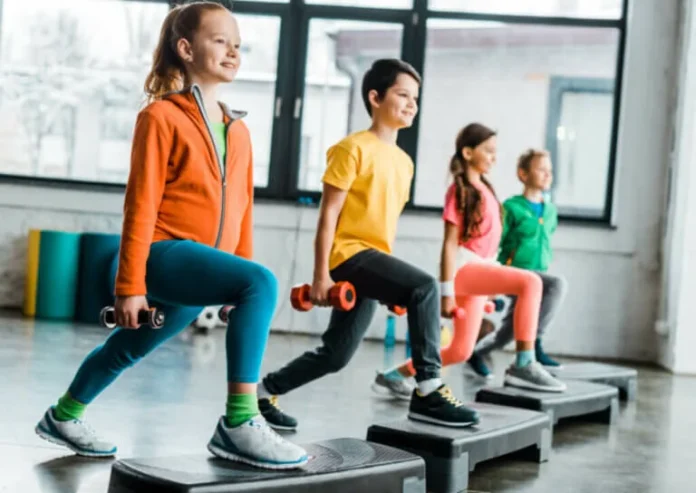Kids can require movement to stay healthy and active. It’s beneficial to help them develop functional movement patterns that will stick with them throughout their lives. Functional movement patterns involve coordinating the lower and upper body muscles to move efficiently and safely. Here are functional movement patterns that can help improve coordination, posture in activities like walking or running, and overall physiological strength:
Functional Movement Patterns for Children?
Pull
Pulling is an exercise that strengthens the upper body muscles, like the back and shoulders. It involves pulling the body toward another object or pulling something toward the body. Pulls can be done horizontally or vertically. Kids can perform them using tools like an elastic band or resistance tubes. This functional movement works the forearms, biceps, triceps, deltoids, abdominals, and back muscles. Kids use these muscles when playing sports, climbing trees, or lifting a heavy backpack.
Push
Pushing is the opposing movement to pulling, strengthening the front shoulders, chest, and tricep muscles. Kids can do push-ups with their hands on the floor or use a bench or wall for support to make it easier. Pushing can help kids develop strength and stability for activities like running, jumping, and swimming. When kids push against something else, they can learn to control their body movements using force.
Squat
Squats involve lowering the body from a standing position into a sitting-like position with the hips below the knees. It can develop muscular strength and help kids maintain proper posture. Kids can do squats with their body weight or use weights for added resistance. Squats may help strengthen the muscles of the lower body, like the glutes, thighs, hamstrings, and calves, which aid in everyday activities such as walking up stairs and lifting objects off the ground.
Lunge
Lunges help build muscular strength and balance. This exercise involves stepping forward with one foot while keeping the other planted on the ground. It can work muscles in the hips, glutes, hamstrings, quads, and calves while strengthening core muscles. Lunges may help kids develop proper alignment as they move their bodies through space. Kids can perform stationary lunges or transition them into walking lunges as they increase in strength and confidence.
How To Incorporate Functional Movement Patterns Into Play
Incorporating functional movement patterns into play can help kids develop coordination and strength in a fun way. Here are some activities that involve these movement patterns:
Wall Pushups
Younger kids can do wall pushups to practice the pushing pattern. Have them stand a few steps away from a wall and slowly bend their arms to lean towards the wall like they’re doing a regular pushup. They will feel the muscles in their chest, arms, and shoulders working as they press against the wall.
Jumping Jacks
Jumping jacks can help kids practice pulling and pushing simultaneously. Have your child stand with their feet outside of hip-width apart and arms by their sides. Then have them jump up while bringing their arms overhead and legs out to the side. As they land, bring their arms back down and legs back together in the starting position.
Squat Jumps
Squat jumps are an effective way to practice the squat pattern with an added challenge. Start by having your child do a regular squat. Then have them jump up from the squat position and reach their arms overhead as they land back into the starting position. They can try this movement after getting comfortable with regular squatting.
Good Functional Movement Patterns for a Healthier Childhood
Functional movement patterns can help kids develop strength, balance, and coordination. The skills they gain by learning and practicing these patterns help them in everyday activities, sports, and other physical pursuits. Teaching kids good functional movement patterns can lead to a healthier childhood and increased self-confidence.
Read Also: FAQ About Physical Therapy



